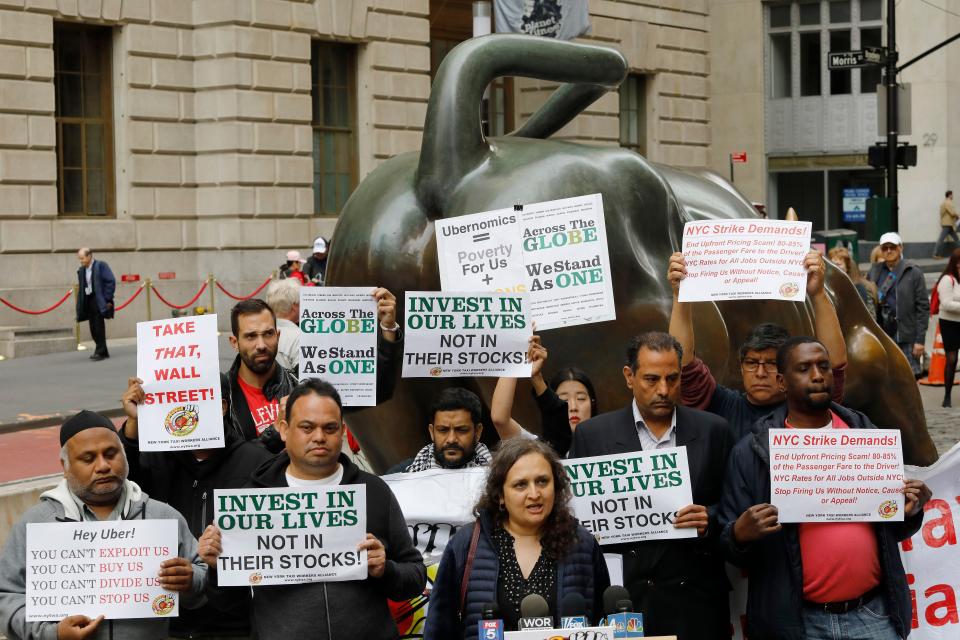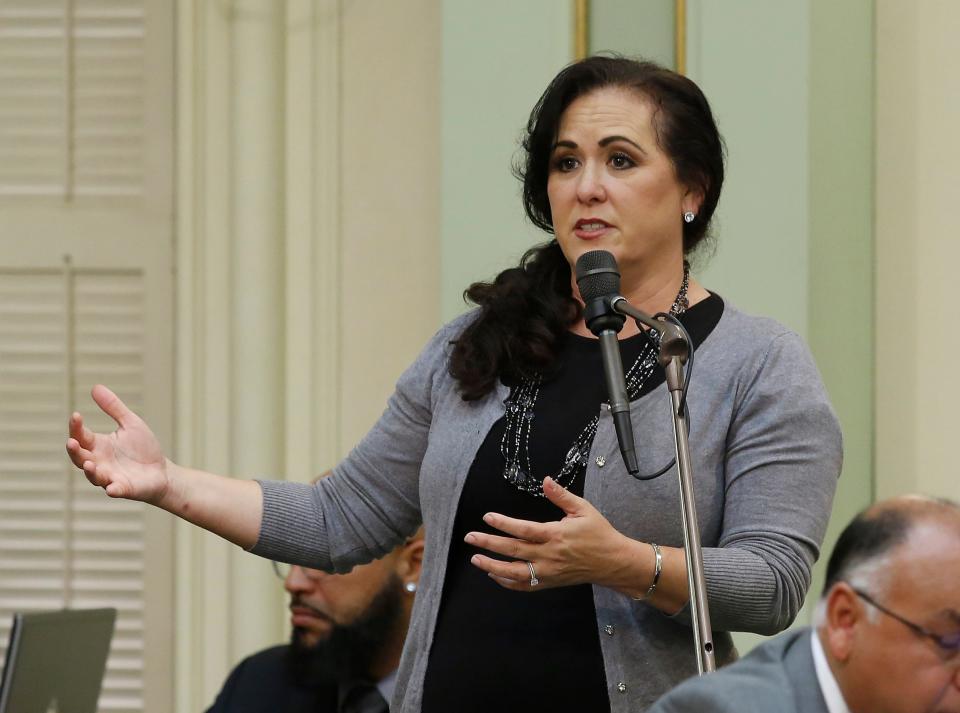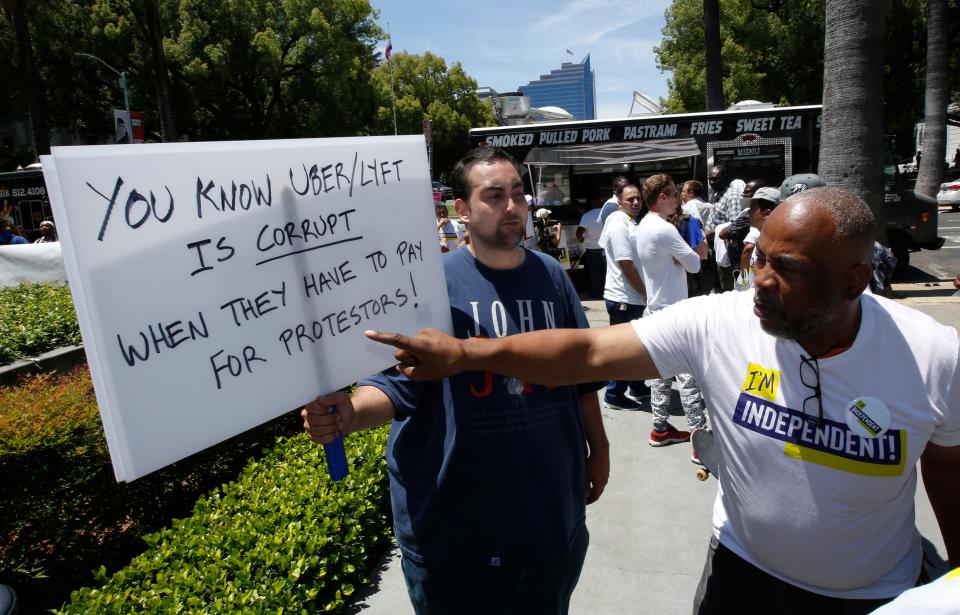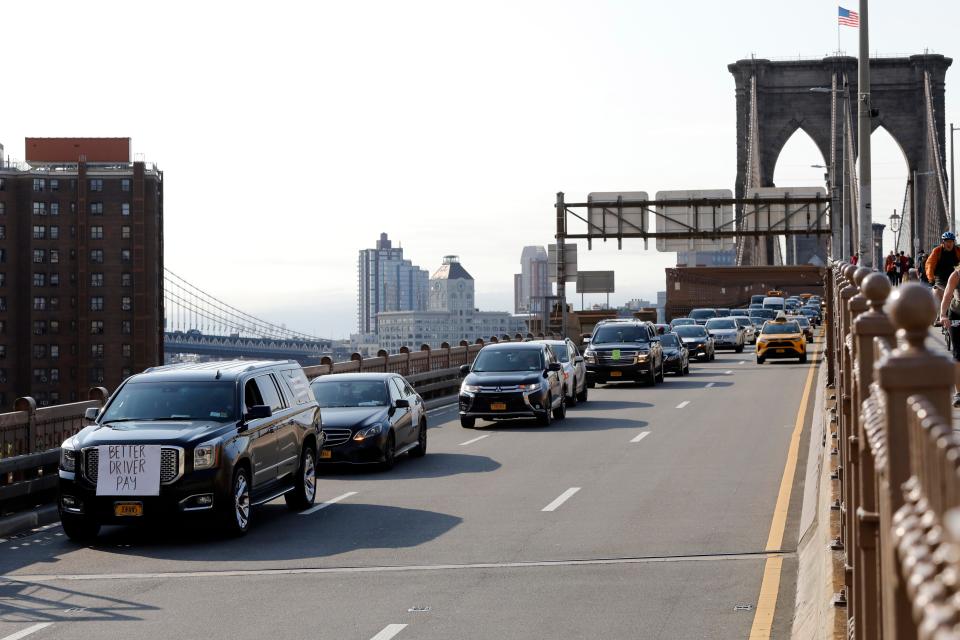Uber drivers and other gig workers in California could see improved lifestyle under proposed law
SAN FRANCISCO – Gig economy workers are increasingly ubiquitous, shuttling us to appointments and delivering our food while working for Uber, Lyft, DoorDash and others.
Thanks in large part to the app-based tech boom emanating from this city, 36% of U.S. workers participate in the gig economy, according to Gallup. But not all gigs are created equal, Gallup adds, noting that so-called contingent gig workers experience their workplace "like regular employees do, just without the benefits of a traditional job – benefits, pay and security."
That could soon change. California lawmakers are weighing what is considered a pro-worker bill that, if passed into law, would set a national precedent that fundamentally redefines the relationship between worker and boss by forcing corporations to pay up.
Big companies such as Uber and Lyft, as well as some workers concerned about losing the flexibility inherent in their gig jobs, have raised concerns about the bill. But supporters of Assembly Bill 5, which has passed the Assembly and awaits Senate approval before it can go before the desk of Democratic Gov. Gavin Newsom, say it’s time to end an exploitative relationship and start providing better pay and some benefits to gig workers.

Assemblywoman Lorena Gonzalez, D-San Diego, author of AB 5, argues that flexibility can be retained while empowering workers. She says that without benefits ranging from health insurance to retirement planning, gig economy workers are left in a financially precarious situation in a state with growing levels of income disparity.
“We have seen an alarming rate of misclassification of workers in California, which has led to worker inequality and burdened taxpayers through their support of government programs and tax credits,” says Gonzalez.
There are many types of independent contractors, including real estate agents, freelance writers and dancers. Some workers will be exempted under the proposed measure, such as lawyers and real estate agents.
Exotic dancers also are hoping for an exemption and have protested AB 5 in recent months around California, saying that they don’t want to be classified as employees of a club and prefer their independent worker status.
But by far the biggest focus of AB 5 is on the growing number of folks who now drive for a living. And the nation’s two giant ride-sharing companies, Uber and Lyft, have been among the most vocal opponents of the measure.

That’s because in its current form, AB 5 would make law a set of standards codified by the so-called Dynamex decision reached by the California Supreme Court last year.
The ruling, which stemmed from a lawsuit by a gig-economy driver against a same-day courier company, says an independent contractor has to be free from the company’s control, is doing work that isn’t central to the company’s business and has an independent business in that industry.
Ride share drivers, for example, are central to Uber and Lyft's business models and generally do not own independent ride share operations. So the tech companies would be forced to change their classification system.
Some Uber drivers demand more pay, less flexibility
Uber and Lyft, valued at nearly $100 billion between them, have argued that being forced to make drivers their employees – thereby covering everything from health insurance to vacation time – would jeopardize the fiscal health of the companies.
In fact, fueled by millions in venture capital, Uber and Lyft have for years subsidized the cost of rides to increase market share. Analysts say eventually ride costs for consumers will need to rise to deliver profits.
Rideshare drivers are passionate on both sides of this issue.

Sacramento resident Melody Jones says driving for Lyft was a life-saver when her husband left her after she discovered she had breast cancer.
“I don’t want to be forced to become an employee, because I have my own business as a personal trainer,” says Jones, who spoke about her reservations about the measure on July 10 to the Senate’s committee on Labor, Public Employment and Retirement, which passed the bill. “Lyft offered the perfect opportunity to provide extra income when I wanted to make it. I don’t want Lyft to tell me when to drive.”
Ride sharing gets heated: Here's why the Uber, Lyft protests might not even work
But Lyft driver Edan Alva of Alameda says he isn't able to live off his earnings. He started driving about four years ago part time, “and that was semi-OK,” he says. When he lost his job he started driving upwards of 60 hours a week, but found the schedule grueling and the money scant.
“There are weeks I’ll log 80 hours at the wheel, and maybe make $1,300 and that’s before paying for gas and maintenance on my car,” says Alva. “I want the company to give time off, sick days, to put something in a pension, all the benefits of a normal workplace because I’m working full-time here.”
As for the vaunted flexibility of a ride-sharing driver job, Alva says simply, “when you’re working 60 to 80 hours a week, there is no flexibility.”
Giving workers benefits would cost millions of dollars
Uber and Lyft’s bosses argued in a June 12 San Francisco Chronicle op-ed piece that drivers demand the flexibility inherent in gig work but added that the companies would be willing to set aside funds to cover so-called worker-determined benefits that could include paid time-off to retirement planning. Representatives of both Uber and Lyft referred USA TODAY to the article when asked about AB 5 and declined to be interviewed.
Uber CEO Dara Khosrowshahi and Lyft co-founders Logan Green and John Zimmer wrote, “We can work with the California Legislature to establish a commitment to driver pay and earnings transparency for the work performed.”
In May, Barclays investment bank estimated that turning California drivers into employees could cost Uber $500 million a year and Lyft $290 million.
Dan Ives, who watches ride-sharing trends for Wedbush Securities, recently published a note saying that AB 5 represents a “clear long-term risk” to Uber and Lyft.
“At a high level, AB 5 is a torpedo to the gig economy,” says Ives. “The business models of Uber and Lyft and many of these companies aren’t built to define people as employees. There may well be unintended consequences when the economy is impacted by legislated issues such as this one.”
Jennifer Barrera, executive vice president at the California Chamber of Commerce, the state’s largest business advocacy group, said companies and lawmakers should be able to work out a compromise.
“We need to work on a third classification for our economy of today, one that’s not totally independent nor full-time,” she says. “It has to be something that offers the flexibility people like, but with some worker protections.”
Self-driving cars threaten drivers: Ford, Volkswagen team up on tech, self-driving vehicle development for US and Europe
But Steve Smith, communications director for the California Labor Federation,which is a sponsor of AB 5, said workers deserve more protections.
“Giving workers a few crumbs is not the reality we’re in politically,” says Smith, whose organization represents 2 million California workers. “We see AB 5 as the foundation on which we strengthen the rights of workers in the gig economy across the country.”
Smith dismisses the notion that classifying drivers as employees would inherently eliminate the flexible nature of their job.

“These companies pride themselves on innovation, so they can figure out how to make them employees and retain flexibility,” he says, adding that “paying workers more isn’t going to bankrupt them.”
Labor lawyer William Sokol anticipates more legal wrangling before anything is etched into law. But he says a new day is dawning for gig workers in California, which could have a ripple effect beginning in other Democratic-leaning states such as Washington, Oregon, New York and Massachusetts.
“Option 1 is that we’ll see more wheeling and dealing behind the scenes with representatives of Uber and Lyft, and maybe they’ll get an exemption of some kind,” says Sokol, who lectures on labor studies at San Francisco State University.
“Option 2 is that it passes, and then the real negotiating begins,” he says. “But something will be signed by Newsom, and whatever it is it won’t be a free ride for Uber and Lyft. We’re at an inflection point.”
Follow USA TODAY national correspondent @marcodellacava.
This article originally appeared on USA TODAY: Lyft, Uber drivers at center of California employment bill

